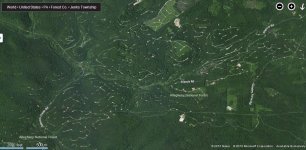T
troutbert
Well-known member
- Joined
- Nov 2, 2006
- Messages
- 10,767
Is there anyone here who know what is the typical spacing of well sites now? And is it about the same across the Marcellus zone, or does it vary a lot?
And I've read about a trend to "downspacing", i.e. much closer spacing, being used in shale formations in other states. And I read that this is being experimented with in Susquehanna County.
Anybody have info on the current spacing? And what spacing they may be going to, if in fact they will be going to tighter spacing?
And I've read about a trend to "downspacing", i.e. much closer spacing, being used in shale formations in other states. And I read that this is being experimented with in Susquehanna County.
Anybody have info on the current spacing? And what spacing they may be going to, if in fact they will be going to tighter spacing?




